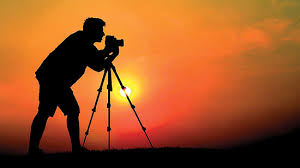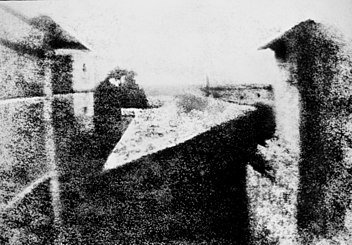The history of photography has roots in remote antiquity with the discovery of two critical principles, that of the camera obscura image projection and the fact that some substances are visibly altered by exposure to light, as discovered by observation. Apart from a very uncertain process used on the Turin Shroud there are no artifacts or descriptions that indicate that anyone even imagined capturing images with light sensitive materials before the 18th century. Around 1717 Johann Heinrich Schulze captured cut-out letters on a bottle of a light-sensitive slurry, but he apparently never thought of making the results durable. Around 1800 Thomas Wedgwood made the first reliably documented, although unsuccessful attempt at capturing camera images in permanent form. His experiments did produce detailed photograms, but Wedgwood and his associate Humphry Davy found no way to fix these images.
In the mid-1820s, Nicéphore Niépce first managed to fix an image that was captured with a camera, but at least eight hours or even several days of exposure in the camera were required and the earliest results were very crude. Niépce's associate Louis Daguerre went on to develop the daguerreotype process, the first publicly announced and commercially viable photographic process. The daguerreotype required only minutes of exposure in the camera, and produced clear, finely detailed results. The details were introduced as a gift to the world in 1839, a date generally accepted as the birth year of practical photography.[1][2] The metal-based daguerreotype process soon had some competition from the paper-based calotype negative and salt print processes invented by William Henry Fox Talbot. Subsequent innovations made photography easier and more versatile. New materials reduced the required camera exposure time from minutes to seconds, and eventually to a small fraction of a second; new photographic media were more economical, sensitive or convenient, including roll films for casual use by amateurs. In the mid-20th century, developments made it possible for amateurs to take pictures in natural color as well as in black-and-white.
The commercial introduction of computer-based electronic digital cameras in the 1990s soon revolutionized photography. During the first decade of the 21st century, traditional film-based photochemical methods were increasingly marginalized as the practical advantages of the new technology became widely appreciated and the image quality of moderately priced digital cameras was continually improved. Especially since cameras became a standard feature on smartphones, taking pictures (and instantly publishing them online) has become an ubiquitous everyday practice around the world..jpg)
.jpg)
.jpg)

.jpg)
Hi! I am a robot. I just upvoted you! I found similar content that readers might be interested in:
https://www.youtube.com/watch?v=3kxi3YF53aUDownvoting a post can decrease pending rewards and make it less visible. Common reasons:
Submit